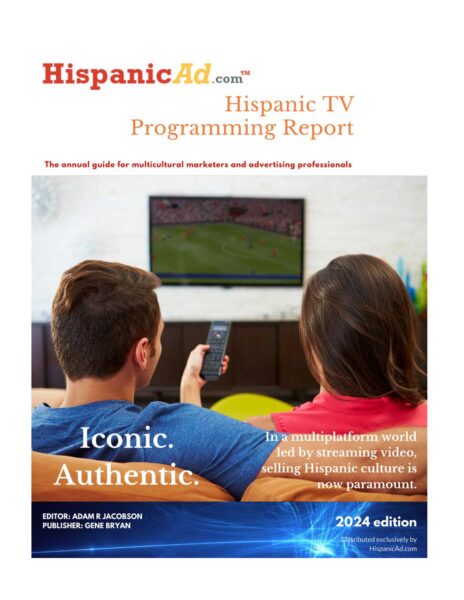When It Comes To Advertising, Multicultural Representation Is Not Enough
February 23, 2023

By Isaac Mizrahi – CEO of ALMA Agency
As we close another Super Bowl cycle, I’ve been approached by some media outlets asking my opinion about the lack of representation of multicultural consumers, mainly Hispanics, in this year’s roster of brands that invested in the big game.
According to one reporter who approached me, out of fifty-seven celebrities she counted, only four were from a Hispanic background. I told the reporter that this statistic was disappointing but not wholly surprising.
I also shared with her that representation only partially touches on what is essential for multicultural consumers across America—to see products and services that portray their stories and lived experiences in creative ideas on mainstream media.
Watching an ad featuring a celebrity they can easily recognize may give an edge to an ad regarding awareness or recall.
However, if the goal of an ad is to create more than awareness, to drive positive brand perception, and ultimately drive the consumer to buy the product or service advertised (crazy idea, right?), then much more matters than mere representation.
The content of the ad, the story it tells, the craft of the production, the narrative, the context, and the style of storytelling matter as much as —and perhaps even more— the choice of the celebrity featured in the ad.
How often do we talk to people outside the advertising and marketing industry to learn that they can barely attribute a favorite ad to the correct brand, or worse, some even connect it with the advertiser’s competitor?
The core of an idea matters. Culture is more substantial than a simple choice of a celebrity. When someone approaches me with the right content, culturally attuned to my life and who I am, I will pay extra attention to it, regardless of the celebrity or the lack thereof.
I remember the first time I visited Japan, arriving after an exhausting trip, battling jetlag, and trying to fall asleep before a busy business schedule in the day ahead. I turned the TV on and started surfing the many channels, trying to find something to distract me and help me fall asleep.
Naturally, for a non-Japanese speaker, it took much work to connect with anything on TV; not only was the language a barrier, but even the content was foreign from a cultural standpoint. I almost gave up when I landed on a channel showing a soccer game.
I knew nothing about the league; I didn’t know the teams, the players, whether this was an important match, or who was the favorite. But I remember that during the rest of the game, I was consumed by watching a game broadcasted in Japanese and rooting for one of the teams.
The above anecdote was an example of the power of culture; in this case, the passion I have for my favorite sport and the favorite sport of my home country, Brazil. When the content of an idea speaks to your heart and soul, you may not need a celebrity to provide the storytelling; the idea becomes the star.
Don’t get me wrong; I strongly advocate for more diversity on and off-screen during key media landmarks and our day-to-day. But I hope we evolve the debate beyond mere representation to culturally relevant stories.
I spoke with two industry leaders: Lisa Torres, Multicultural Leader at Publicis Media, and Steve Mandala, Chief Revenue and Local Media Officer at Estrella Media, and asked for their take on this topic:
Steve Mandala:
“It’s widely acknowledged that the fastest way for a company to grow share and/or volume is to speak to more consumers, but the drive to growth continues beyond there. Communicating and activating new consumers swings on resonating with the consumer through language and culture. Success isn’t based on one or the other, but the artful combination of both.”
Lisa Torres:
“Representation is just seeing, and relevancy is behavior. I can see people who may look like me in an ad, but without insights or inclusivity of culture (not just people), it means nothing. You may not even notice. I wonder why our industry is averse to applying the same principles you would for any other growth segment.
If you are targeting mothers, you use insights around motherhood, and the sights and sounds would match. If you are targeting NBA fans, you adjust the content; you don’t use generic sports visuals and words.
The same applies to targeting Gen Z and any other “generational” age demographic verbiage we like to throw around. Without insights, relevancy, or intentionality, all you get is eyeballs and reach with no sales.
Imagine if being intentional about your relevancy to the fastest growing demographics both in people and in wealth that an advertiser’s sales would jump from an anemic single-digit YOY (which they seem to be happy with) to double-digit profitable and sustainable growth. But for that, the industry needs to change from chasing the lowest common denominator, fake scale, and cheap CPMs.”
I hope that by the time the next Super Bowl, advertisers that target diverse segments will move beyond casting and language (like a “strategically” placed hola inside an ad) and fully embrace culturally driven stories as the foundation of their creative strategies.
True representation of diverse segments happens not when multicultural consumers seem present by token inclusion but when they feel respected and truly represented. It’s time for advertisers to start casting culturally relevant ideas!































